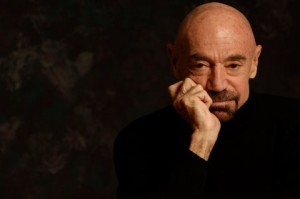by Jan Dunn, MS
 Today we continue our focus on the Franklin Method, with part II of thist series by Jan Dunn…
Today we continue our focus on the Franklin Method, with part II of thist series by Jan Dunn…
In the dance world, there is a long list of institutions / companies where the FM has been used and acclaimed– below are only a few of them:
-The Julliard School (NYC)
-Trinity Laban Conservatoire of Music and Dance (London)
-The Royal Ballet School (London)
-The Royal Danish Ballet
-“A Chorus Line” national touring company
-Cirque de Soleil
-Paris Opera Ballet
-Frankfort Ballet
-Hong Kong Modern Dance Academy
-The American Dance Festival
Articles about the FM have been in several dance publications over the years, such as Dance Teacher, Pointe, and Dance Magazine. These can all be found on the Franklin website www.franklinmethod.com, along with articles in other areas such as fitness and Pilates.
The FM is based on practical applications of neuroplasticity, and uses imagery as the primary tool to achieve positive changes in our bodies. There is much research to validate the use of imagery in teaching movement, especially in the sports world (there is research in dance as well, but only recently – whereas in sports, studies involving imagery go back many years). Experiential anatomy is also a major part of learning the FM. That means not only learning anatomy from a book perspective, but taking the knowledge into your body with movement – “embodying” it is a term often used for this, in Franklin as well as other movement education systems. Embodiment gives you direct physical awareness of the body’s function and design.
If you have never experienced working with the Franklin Method, the best way to start is by taking a workshop with a certified instructor. The FM is relatively new to the US – while the teacher training has been in Europe for over 20 years, here in the States it only started 8 years ago. There are still less than 200 instructors in the US, and as yet only a small percentage are also professionals in the dance world. You can find the list of certified teachers / their locations on the Franklin website, and also on the website www.franklin-method.us. I encourage you to take a workshop with whomever you find in your area, regardless of whether or not they are a dance person. Dancers usually relate instantly to FM, as it incorporates many concepts they have already had exposure to in their dance lives (Eric Franklin was, after all, first and foremost a dancer and choreographer J). Franklin himself gives several workshops a year in the US, so if you can locate one that works geographically for you, do it! You will most likely love it, and it will open your eyes to a whole new way of thinking about your body and movement.
If you do not have access to any workshops or certified teachers, there are still ways to experience the FM. All of Franklin’s books and videos are available through OPTP, a physical therapy supply house – www.optp.com. Two of his many books are especially useful for a dancer new to the FM, and are ones I recommended immediately:
-“Dynamic Alignment Through Imagery”
-“Dance Conditioning”
The second book has many actual conditioning exercises that dancers usually find very useful, and that will help give you that overall balance and strength that you need to avoid injury –something we’ve talked about before in this column!
If you are interested in becoming a Franklin-certified teacher, that information can also be found on the www.franklinmethod.com website. There are 3 levels of training, but you do not have to do all 3 in order to teach. You are allowed to teach whatever material is contained in each level that you complete, even if you do not go on to the next one. There are usually at least one or two Level One courses taught in the US each year.
Our next posting will continue with our topic of “conditioning”, only this time it will all about the importance of aerobic conditioning for dancers. Our guest author will be Emma Redding, PhD, who is head of Dance Science at Trinity Laban Conservatoire of Music and Dance, and current President of IADMS (International Association of Dance Medicine and Science).

Editor Jan Dunn is a dance medicine specialist currently based on the island of Kauai, Hawaii, where she is affiliated with Pilates Kauai. She is also a Pilates rehabilitation specialist and Franklin Educator.
Originally a dancer / choreographer, she became university dance faculty, most recently as Adjunct Faculty, University of Colorado Dept. of Theatre and Dance. Her 28 year background in dance medicine includes 23 years with the International Association of Dance Medicine and Science (IADMS) – as Board member / President / Executive Director – founding Denver Dance Medicine Associates, and establishing two university Dance Wellness Programs.
Jan served as organizer and Co-Chair, International Dance Medicine Conference, Taiwan 2004, and was founding chair of the National Dance Association’s (USA) Committee on Dance Science and Medicine, 1989-1993. She originated The Dance Medicine/Science Resource Guide; and was co-founder of the Journal of Dance Medicine & Science. She has taught dance medicine, Pilates, and Franklin workshops for medical / dance and academic institutions in the USA / Europe / Middle East / and Asia, authored numerous articles in the field, and presented at many national and international conferences.
Ms. Dunn will be writing a new column, “Dance Wellness” for 4dancers in 2012 and will also be bringing in voices from the dance wellness/dance medicine field to share their expertise with readers.






